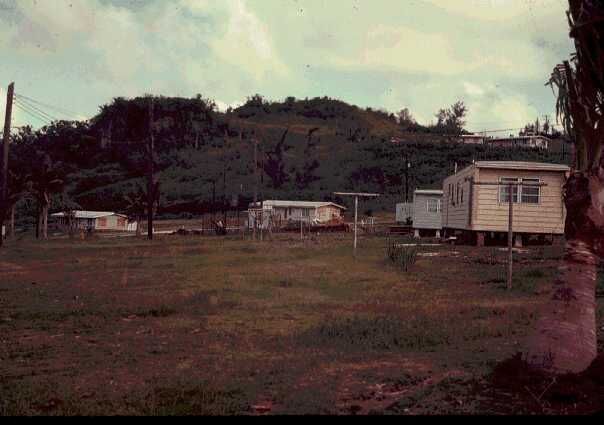E.J. Kahn Jr., in his delightful 1966 book, “A Reporter in Micronesia,” wrote that the pride of Saipan during the Japanese era was the Japanese-built “city” of Garapan, which on the eve of the war had a population of 29,000, and amenities comparable to those of Koror in Palau and Dublon (Tonowas or Tonoas) in Truk (Chuuk). Before World War II, the NMI, Palau, the Marshalls and what is now known as the FSM were administered by Japan. At the time, Koror was “a stylish Oriental metropolis with a population of thirty thousand and factories that manufactured beer and fireworks. Koror had public baths, laundries, dressmakers, tailors, masseurs, barber shops, butcher shops, and drug stores. There were forty-one ice [as in water in its solid form] dealers, seventy-seven geisha girls, one fortune-teller, and fifty-five restaurants, thirteen of them considered upper-class.” Kahn added, “Palauans had never seen anything like it before, and they haven’t since, either.” As for Dublon, “at the height of the Japanese regime it had a network of paved roads, a hotel, two geisha houses, a large seaplane base, and a theater at which traveling circuses from Tokyo went through their acrobatic paces.” The islands under Japanese rule were known as “the Japanese Riviera.”
Following the war, Kahn said nothing was left of Garapan. Twenty years later, he added, under the U.S.-administered Trust Territory government, “Garapan is still nothing. Just about all that remains of its former glory is a larger-than-life-size bronze statue of the founder of the sugar-cane industry there. Now bullet-riddled, he stands forlornly in that was once a manicured botanical garden, but now is a tangle of undergrowth….”
Kahn said for Trust Territory residents, the Japanese era was “The Concrete Period,” while the American administration was “The Corrugated Tin Period.” The TT, he added, had a subsidized economy. And yet, “America is supposed to be preparing [these islands] to be, if not independent, at least non-dependent.”
Back then, U.S. experts said tourism was the way forward for the islands’ economy, with Japan, Australia and Guam as the potential major sources of visitors. On Guam, Kahn said, “there are thousands of American servicemen who get to feeling cooped up on that tropical island and, for a change, would leap at the chance to visit other tropical islands.” He said some TT administrators “think that Pagan…might make a fine tourist spot. Pagan has hot springs and a volcano that now and then still spits lava. ‘Most people on Guam have never seen an active volcano!’ a Trust Territory official [said]. ‘They’d flood the place!’ Not long afterward,” Kahn added, “80 percent of the building on Pagan were destroyed by an active typhoon.”
At the time, Truk (Chuuk) was the most heavily populated TT district. It had one hotel with 10 rooms. The hotel’s “motto” was, “We’re not fancy but we’re clean!”
In 1992, economist Bill Stewart authored a “Business Reference & Investment Guide” to the CNMI, which stated, among other things, that some 47 years after the conclusion of WWII, the NMI, under its self-governing Commonwealth government, had finally entered a reconstruction phase. He said it was Japan’s great boom period in the 1980s that fueled Saipan’s economic growth. In 1970, he added, the island was “almost devoid of the amenities of the twentieth century.” In 1990, Stewart said the combined range of businesses in the CNMI reported, for the first time in history, total gross revenues of $1.2 billion (worth $2.8 billion today). The local economy was growing, and the CNMI itself was becoming less dependent on the U.S.
As for the economy during the American/TT administration, Stewart said it “languish[ed] underdeveloped for an entire generation, some 33 years, following the conclusion of the Pacific war…. The United States Government was not particularly interested in the islands — except for Saipan and its training base for Central Intelligence Agency covert operations…and did not wish to encourage investments from the nationals of other countries.”
Is the NMI headed back to that era of complete dependence on Uncle Sam?
Today, it may seem that the unstated U.S. policy toward the NMI is: “These islands are national security assets, which, right now, are critically needed by the U.S. military. So let’s all focus on that. As for those unhappy with the local economy, which we all know can’t recover without tourists, foreign investments and foreign labor — never mind. Just go to the states. You can come back once your politician friends and/or relatives win the next election, and appoint you to a federally funded government post.”
Send feedback to editor@mvariety.com

Staff housing, Navy Hill, Saipan, 1968.











